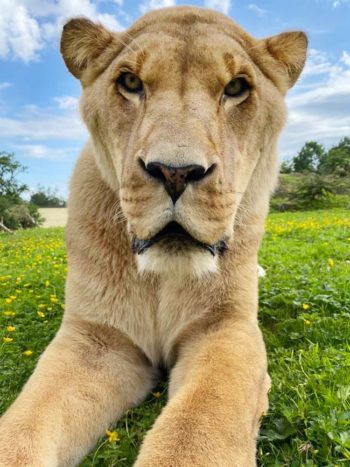10 Jun 2021
Lion in Scotland becomes first in the world to undergo dental procedure using new system aimed at reducing the number of people needed for anaesthetic procedures.

The lion received a root canal and two tooth extractions using the anaesthesia system.
A lion in Scotland is the first in the world to undergo dental surgery aided by a new anaesthetic system developed by NHS practitioners.
The male lion, at Five Sisters Zoo in West Calder, received a root canal and two tooth extractions thanks to the device, named SAFIRA, developed by four consultant anaesthetists at the Queen Elizabeth Hospital in King’s Lynn.

Susan Thorne, clinical director of DentalVets, carried out the root canal procedure using the device provided by Cambridge-based medical device company Medovate, which wants to bring SAFIRA to market through UK distributor Vygon Vet.
The device is aimed at reducing the number of people required for anaesthetic procedures from two people to one, removing the need for communication between two anaesthetists by allowing a single user greater control.
Adele Copland, operations supervisor at Five Sisters Zoo, said: “Striving to give our rescued lions the best care we can at Five Sisters Zoo, we were happy to try this new way of reducing any mouth discomfort they may have had after their specialist dental treatment.
“Sadly, they arrived here with damaged teeth from their mistreatment at the circus from which they were confiscated in Belgium. They have bounced back wonderfully after their treatment and are back to normal.
Chris Rogers, sales and marketing director at Medovate, said: “This is an amazing story of how an idea developed by NHS consultants is not only helping human patients globally, but is also making regional anaesthesia safer for animals.
“There are a significant number of regional anaesthesia blocks completed in veterinary practice per annum globally, so potentially this NHS-developed device could play a major role in the future of veterinary practice worldwide.”